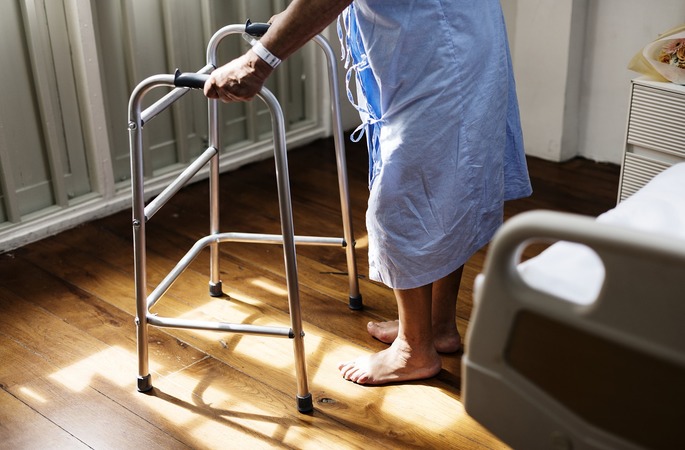All young professionals have expectations and aspirations to serve their nation when they begin their career. There will be ups and downs, frustrations, misunderstandings, misgivings and disappointments, distractions and even depression while trying to fulfil one’s career ambition, or also to achieve what you set out when joining the service. Notwithstanding this, it is prudent to pursue and persevere until the goal is met, no matter what obstacles may come your way.
I was born to a modest middle-class family and grew up with seven other siblings. I was fortunate to be able to attend one of the few excellent schools in the southern province of Sri Lanka and was educated in that school from Primary to the University. I enjoyed every part of it, and I still recall my childhood with pleasant memories.
Then came the decision time in Year 12, about my career. Unlike in modern education systems, there were no career advisers. Available information was limited, and I had to rely on a few teachers and friends. As I aspired to serve my country and nation, I chose to apply for entry to the medical school. I was ecstatic when I passed my A level and gained entry to my chosen medical school.
Having graduated and practised for over 40 years, I am now going to discuss my experience about risks our patients were exposed to, sometimes culminating in serious harm. There are now guidelines, protocols and policies to mitigate risks. However, there were hardly any when I entered the world of clinical practice.
My first disappointment witnessing serious harm was when I was a fifth-year medical student. I was doing my surgical appointment in what was then called the Professorial Unit in the teaching hospital. There was a middle-aged man admitted with an injury to the left leg, having been attacked by a bull. He was bleeding severely from torn muscles behind the knee. The bleeding was so severe, the Registrar was called in, and he applied pressure bandages and booked him first in the emergency list. However, he continued to bleed, and notwithstanding our valiant effort, we lost him.
This patient and his situation have lingered in my mind, and when I became a vascular surgeon, I realised that this poor man had an injury to the popliteal artery, the main blood vessel perfusing the leg, and should have been operated on immediately to save the limb and his life.
My first employment after graduation was as a House Officer, although I was now being addressed as ‘Doctor’. I very much enjoyed my training as a House Surgeon, and it was jam-packed, being on call every other day accepting emergencies. Again a middle-aged man was admitted with an injury to the right leg with a supracondylar fracture of the femur, the long bone of thigh above the knee was broken With my limited experience, I realised his foot was pale and had no pulses discernible. This was an emergency with circulatory compromise, requiring urgent intervention. Hence, without hesitation, I rang the Consultant (there was no Registrar), and he advised me to put his leg on traction on a special frame, which I managed to find with difficulty.
To my surprise, once the leg was put on traction, circulation was improved, and foot pulses became palpable. Pleased with the outcome, I advised the nursing staff to record pulses every 30 minutes and, if there were concerns, to call the doctor on duty. When I returned to the ward the following morning, to my disbelief and anguish, the leg was ‘dead’, requiring amputation.
This was a case of serious harm which – sadly – I had to witness in my formative years. The hospital where I was working at the time was a district general hospital, with two surgeons. Although there was an orthopaedic surgeon, all fractures were admitted under general surgeons.
These were two cases of serious harm, one patient losing his life, and the other patient losing a limb.Both should have been averted. However all was not doom and gloom – there were pleasant memories as well. Rabies was prevalent in Sri Lanka, and I believe it still is. I was a district medical officer, popularly known as a DMO, an important position in rural practice. It was a scenic area in a tea plantation, and as a matter of fact on the first Tea Plantation created by the British, known as Lulekandura Plantation.
I was there for over three years, hobnobbing with Planters and Estate Superintendents. I was doing Outpatient clinic one day, when a young man attended, having been bitten by a stray dog. Accepted practice at that time was to administer the anti-rabies vaccine, and my recollection that was for two weeks, hence he was prescribed the same.
A few days later he was admitted to my small hospital, with weakness and paresthesia of the legs. The following day, he went into urinary retention, and I diagnosed ascending myelitis and, realising potential respiratory failure was occurring, I transferred him to the provincial hospital. He indeed went into respiratory failure, requiring ventilation. A few months later, he visited me to thank me for saving his life.
Another sad story was a pregnant woman bitten by a fox: but the anti-rabies vaccine was not recommended in pregnancy. I spoke to a few specialists, to see whether she could be given immunoglobulin but there was no clear cut answer. This poor woman did develop rabies a few months later and sadly died.
In the late seventies, there were no internet facilities for online searches, but in hindsight I should have given the anti-rabies vaccine, leaving aside the unborn baby, and saved the mother’s life.
Lack of facilities in the rural context is detrimental to patients lives. A young woman who was a regular attendee with asthma was admitted with a severe attack of asthma, and not responding to medication. I resuscitated her with steroids and aminophylline infusion, but she required assisted ventilation and died in the ambulance while being transferred to the bigger unit.
So: what made me do vascular surgery? During the darkest chapter of Sri Lankan history, I was a House Officer, and two surgeons left the hospital because of communal violence. We were running the hospital with no surgeon on site. There was a man in his seventies with a large abdominal aortic aneurysm (swelling of the main blood vessel) whom I had eventually transferred to the Main Hospital in the capital, Colombo.
A few months later he visited me to thank me for saving his life. At the time, I realised how scarce vascular surgeons were in Sri Lanka, and I only recall two vascular surgeons for the whole country. This was a good enough reason for me to specialise, and I arrived in England.
Surgery was a famous and demanding speciality, and finding a training job was not easy. But with courage, commitment and determination nothing is impossible. So with perseverance, I got there. I moved around the country and eventually was appointed as a Consultant in the year 2000. Here there are protocols, policies morbidity and mortality meetings, clinical audits, multidisciplinary meeting all directed towards improving patient care.
Incident reports are part of daily practice, yet not always done with the purpose it intended to serve. I recall one instance when our Medical Director, an excellent surgeon, was operating. Nurses always stick rigidly to local protocols without flexibility and whatever they believe, and they threatened the surgeon to report him to the Medical Director. The surgeon retorted and replied: I am the Medical Director’.
It is now well established that all clinical specialities have multidisciplinary meetings (MDTs) which are attended by the relevant clinicians to discuss patients where treatment decisions are taken. Our vascular MDT was on Thursday, and I was conducting it with Radiologists and other members. I got a call from a well-respected colleague to urgently see a patient with a vascular problem. I interrupted the MDT meeting and rushed to see this patient who was an Asian woman in her mid-thirties, who suddenly developed weakness of the legs, and was unable to walk. She was brought to the Emergency Department, and the doctors were mainly concerned with problems with the spine and the spinal cord. After neurological examination,
MRI scans of the spine were conducted, and Neurologists were contacted, and no neurological issues were found. She was languishing in the orthopaedic ward for two days until my colleague found icy cold, pulseless legs. She had no groin pulses, and my diagnosis was a saddle embolus. Urgent investigations were done, she was operated on, clots removed and other procedures to relieve pressure in the calves known as fasciotomies were performed. After numerous procedures, she kept her legs but lost all her toes, and she never walked again.
This was severe harm, and it was settled for a large sum. This could have been averted if her leg pulses were examined. I stressed the importance of checking pulses to medical students and doctors in training and urged them to think about vascular causes when faced with patients with weakness of limbs, and not just concentrate on neurological problems.
Finally, to talk about misadventures, I became a successful endovascular surgeon, and have seen and presided over a hundred cases of abdominal aneurysms with endovascular technique (minimal access). In the1990s, a new technique of repair of an aneurysm was pioneered by an Argentinian surgeon who later became Professor of Surgery at Washington DC medical school.
I was doing an iliac artery aneurysm to place a stent to exclude it, to prevent bursting or rupture. It was discussed in our MDT meeting, and the Radiologist and surgeons agreed. I was doing it through the right groin, and the guide wire was successfully passed, and part of the stent was deployed. However before the second part of the device was deployed, the guide wire accidentally got dislodged, and we were not able to position the wire.
An aneurysm ruptured and attempted at open repair was unsuccessful. This was a case of misadventure, and we followed the local procedure of incident reporting and root cause analysis. Likewise, I have witnessed cases of misadventures during the years of my practice. It is not appropriate to write about these cases, but one such case is accidentally puncturing both aorta and vena cava ( the main artery and vein in the abdomen) by a gynaecologist during routine laparoscopy in a young girl, requiring major emergency surgery to stop bleeding.
Surgery is a controlled injury however small that may be, and it is not without complications. No surgeons or doctor does any deliberate harm to their patients, although there have been occasional bad apples in the profession.
Although all potential complications are explained during consenting, things sometimes go wrong unexpectedly, or misadventures do happen. Unfortunately, to my disappointment, having been a teacher and tutor to medical students and doctors in training, it is easy to forget the vital importance of clinical examination, relying and placing more emphasis on technology. Although technological advances are essential in clinical practice, there is no substitute for clinical examination performed by a doctor’s trained eye and mind.



